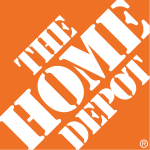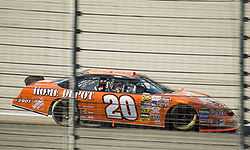Visual brand language

Visual brand language is the unique "alphabet" of design elements – such as shape, color, materials, finish, typography and composition – which directly and subliminally communicate a company's values and personality through compelling imagery and design style. This "alphabet", properly designed, results in an emotional connection between the brand and the consumer. Visual brand language is a key ingredient necessary to make an authentic and convincing brand strategy that can be applied uniquely and creatively in all forms of brand communications to both employees and customers.[1][2] Successful Visual Brand Language creates a memorable experience for the consumer, encouraging repeat business and boosting the company's economic health. It is a long-term creative solution that can be leveraged by an executive team to showcase their brand's unique personality.[3]
For example, as shown, a Starbucks constant, main design ingredient was black and white icons. The icons represent elements of the "alphabet". Each year, the promotional campaigns would use the same icons but the color palette and the featured icons would change. Another distinguishing iconic design element is the BMW 'split grill' continually employed to represent the brand. While the grill size and design details evolve over time, the underlying idea is constant and memorable. The use of color is also a powerful associative element for consistent imagery, as exemplified by the comprehensive application of orange by The Home Depot across all its brand materials.
The strategic pyramid
The strategic pyramid is a four-staged hierarchal pyramid that serves as a guideline to establish or re-establish the visual brand language of a business. With the market being flooded with new products, services, and ideas each day, it is vital for businesses to stand out from the crowd. Every brand has a fundamental need to connect with their target market and audience.
This pyramid serves as a reference system for designers and other individuals within the company to better understand and create the brand personality, product attributes, design principles, and signature elements of the brand design.[4] Starbucks Coffee will be used as an example to help better illustrate this pyramid.
Brand personality
Brand personality is understood as the human characteristics or traits that can be attributed to a brand.[5] This is also known as brand identity. In 21st century business, it is important for a business to distinguish itself from its competitors through emotional branding. By establishing a brand personality, businesses can form emotional bonds with their consumers which in turn establishes future behaviours of brand loyalty. Brands have the ability "to fill a void, to take root, and to flourish."[6] For example, from the very beginning, the brand mantra of Starbucks Coffee was to create a "rich, rewarding coffee experience." Starbucks demonstrates a "persona" that goes far beyond their functional benefits.[7]
By establishing desired traits of a brand, businesses can then take the next step of building strategies to successfully communicate their brand personality to consumers.
Product attributes
Product attributes are meant to highlight and describe the uniqueness of a brand. This can be achieved through a variety of ways, however it must build upon an established brand personality as previously mentioned. Product attributes are the traits that distinguish a brand against its competitors. Starbucks has successfully established its brand personality through its customers who have described Starbucks synonymous to, "comfort, quality, and community."[8] Starbucks coffee has achieved the attributes of their brand by understanding that their coffee was not the only key driver to their success. They focused on creating a comfortable atmosphere within the store known as the "Starbucks Experience," where both employee and customer come in for more than just coffee. Product attributes are meant to "deliver new ideas to existing products and services."[9]
Design principles
Design principles are specific directions and objectives that designers can refer to when designing a product or platform. Designers accomplish this by further building upon the established product attributes with specific visual concepts that help guide the expression of a brand. This is the process of taking the product attributes and transforming them into a tangible and actionable item. For example, before designers work on designing a store for Starbucks, they are required to start their careers by working behind the counter. By understanding how the store layout works with both baristas and customers, designers can better create a workspace that is both aesthetic and functional. Howard Shultz, the CEO of Starbucks, is fond of saying that "retail is detail" and that if anything that goes overlooked customers become unhappy and costly errors occur.
Signature elements
Signature elements are a series of toolkits used in creating and translating visual brand language. This includes colour, material and finish, logo, light, and sound. The way that colour communicates to audiences is known as colour psychology or colour symbolism. Businesses utilise how colour communicates in order to both further establish brand personality and connect with the customer. For example, Starbucks uses the colours green and white in their logo. Green is a colour that is secure, natural, easygoing and relaxing. White is a colour that symbolizes goodness, purity, and sophistication. The Starbucks logo itself has stood the test of time by evolving with the company in direct relationship to their corporate identity. The center piece of their logo, the Siren, helps tie Starbucks to its traditional coffee roots in both Europe and Seattle. Another way Starbucks translates their visual brand language is through their stores atmosphere that is not only utilized by store design, but through music. Timothy Jones was the first to recognize that music could be used not only to highlight the Starbucks experience but to also further the brand image of Starbucks by supporting artists through Starbucks record label Hear Music.
Examples
-

BMW grill design, 1938.
-

BMW grill design, 2008.
-

Home Depot use of orange for graphic identity.
-

Home Depot use of orange for marketing.
See also
References
- ↑ Brunner, R.; Emery, S., Do you matter? How great design will make people love your company., (2009), Upper Saddle River: FT Press.
- ↑ Lockwood, T; Walton, T., Building Design Strategy, (2008), New York: Allworth Press.
- ↑ Aaker, D., Building Strong Brands, (1996), New York: The Free Press.
- ↑ Mumgaard, J., Mathew, N., & Prince, M. (n.d.). Expressing Brand Through A Product. Beyond Design Chicago. Retrieved August 11, 2013, from info.beyonddesignchicago.com/Portals/117474/docs/expressing-brand-through-product-bdi-innovation-2013.pdf?hsCtaTracking=d2feb6b7-867d-419a-8893-e5c0c1afb4f0%7Ce417b280-5666-4488-90c5-572cc6a7466f
- ↑ Keller, K. L., & Richey, K. (n.d.). Journal of Brand Management - The importance of corporate brand personality traits to a successful 21st century business. Palgrave Macmillan Journals. Retrieved August 11, 2013, from http://www.palgrave-journals.com/bm/journal/v14/n1/full/2550055a.html#bib6
- ↑ McGrath, C. (n.d.). Starbucks, A Lifestyle. n.p.. Retrieved August 11, 2013, from https://www.msu.edu/~mcgrat71/Writing/starbucks_a_lifestyle.pdf
- ↑ Arora, P. (2013). Starbucks it's bigger than coffee. Retrieved August 15, 2013, from http://www.slideshare.net/puneetarora369/starbucks-final-pp t
- ↑ Horton, R. (2012). Brand Identity Research: H&M, Starbucks, and NYT. Retrieved August 15, 2013, from http://www.slideshare.net/rebeccaeliz/brand-identity-research-hm-starbucks-and-nyt
- ↑ Michelli, J. A. (2007). The Starbucks experience: 5 principles for turning ordinary into extraordinary. New York: McGraw-Hill.